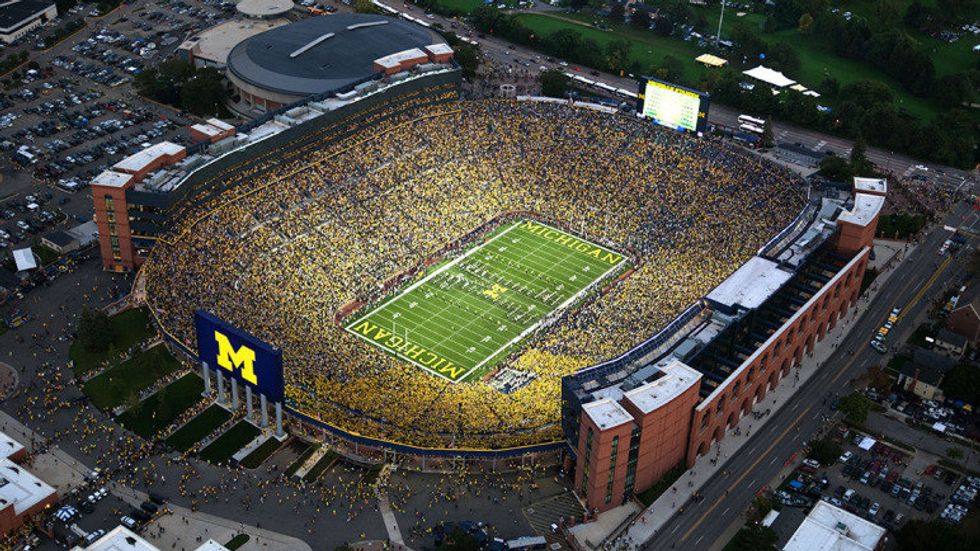How Use of Technology Improved Business of Sports
Data is the new oil... and it's utilized everywhere.
"What's the difference between a customer and a fan?"
"Fans will paint their face purple, fans will evangelize. … Every other CEO in every business is dying to be in our position — they're dying to have fans."
While fan passion is as old as sport itself, leagues and franchises are now using cutting-edge technology not just to build winning teams but also to capitalize on the ardor of their customer base to grow another revenue source — corporate sponsorship. The world of sport is continually changing over the years, and the use of technology is just one of those areas that have made an impact on many sports in the modern day.
The use of technology in sports is nothing new and has been used to aid fair play since long. Instant replays and other high-tech aids have helped third umpires and referees make the right call and clarify penalty decisions. An example of such technology is Hawk-Eye, a computer and camera system which traces a ball's trajectory. It is being used in international cricket and tennis, and many other sports are also looking at making use of this technology. There are numerous software packages that are designed for fitness and nutrition professionals to organize data and produce reports. For example, team beep test which is the most versatile and useful software for conducting and recording results of the bleep/beep test, with results recorded directly onto your computer.
However, we now see that technology is being used not just to improve the game but also to drive the business of sports. Some of the latest trends in the sporting business are:
Use of Big Data:
Moneyball popularized the notion of using statistics with predictive modeling to build a winning team more than a decade ago. But the 2013-2014 NBA season is the first for all teams to have SportVU tracking, a system of six cameras in each arena that measures the movements of the ball and every player on the court, generating an entire database of performance information. They have more data than they can analyze.
The data are changing the way the game is played, shifting emphasis from how many total points a player scores to measures of player efficiency, productivity per touch, and defensive effectiveness. With every team having the same deep information, the way to gain a competitive advantage in the future will be finding an analytic technique or technology from another industry that can be applied in an innovative way. Data analysis is also likely to contribute to better biomechanics in sports as wearable devices determine how much physical stress players have endured and may even eventually predict the likelihood of injury so that a player can be rested before he's hurt.
Rise of "smart arenas":
Franchises are looking for ways to capitalize on mobile technology to enhance the fan experience in their homes and as spectators in stadiums and arenas. Mobile devices are popular as "second screens" in-home viewing of televised sports, but 70% of fans bring a mobile device to the stadium or arena and expect to use it during a game there as well.
Mark Craig of Cisco Systems Sports & Entertainment Group has been involved with creating arena Wi-Fi systems that will function with a dense population of users. The new Sacramento Kings arena has mobile applications for check-in, ushering you to your seat, indicating shortest bathroom and concession lines, seat upgrade options, cashless commerce, and in-seat wireless charging. The Kings are exploring the use of drone technology to survey available parking spaces and even provide unique in-arena camera angles. Sports is a people business and so the management is looking for ways to use technology to further engage with people. This could mean one day scanning a ticket on your phone to enter the arena, which sends an alert to a service representative to let them know it's your birthday, so your favorite cocktail can be delivered to your seat!
Using social media for deeper fan engagement:
Fans want to be connected to sports teams and content anytime, anywhere. Clearly, the social media connection is vital across all leagues: NASCAR is developing a "digital cockpit" that includes onboard telemetry and in-race social media interaction between fans and drivers.
Social media has enabled direct connections between fans and athletes. Some players do weekly use of video and social media to document their experience. On the lighter side, NBA players have done music parody videos that are a hit with younger fans on YouTube.
There are people who believe that the infiltration of technology in sports has turned it into just another money making business, having put talent and passion on a back burner. However, there's no denying the fact that this very technology is the reason for the widespread adoration of various sports and also what gives way to mo more scope for advancement in the field.
The inter-dependency of sports and technology is just in its infant stages and there is much more to be explored. The games have just begun!






































